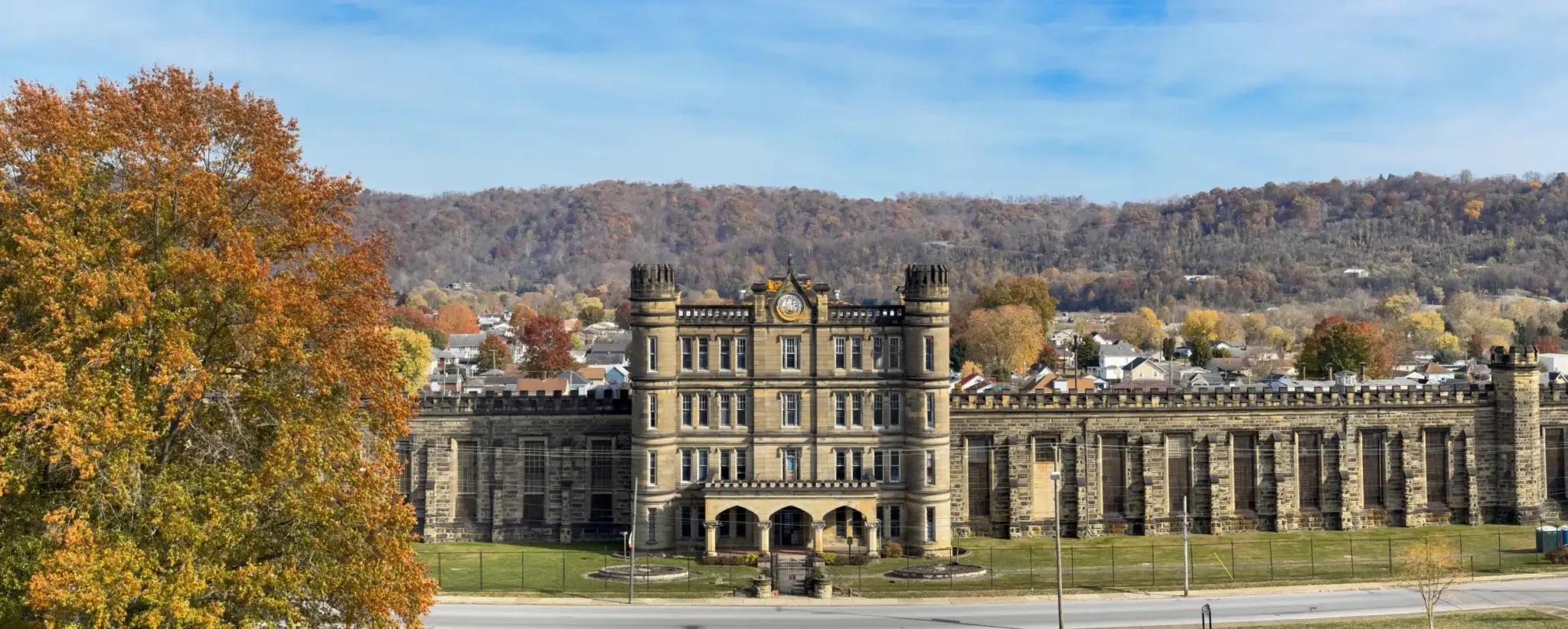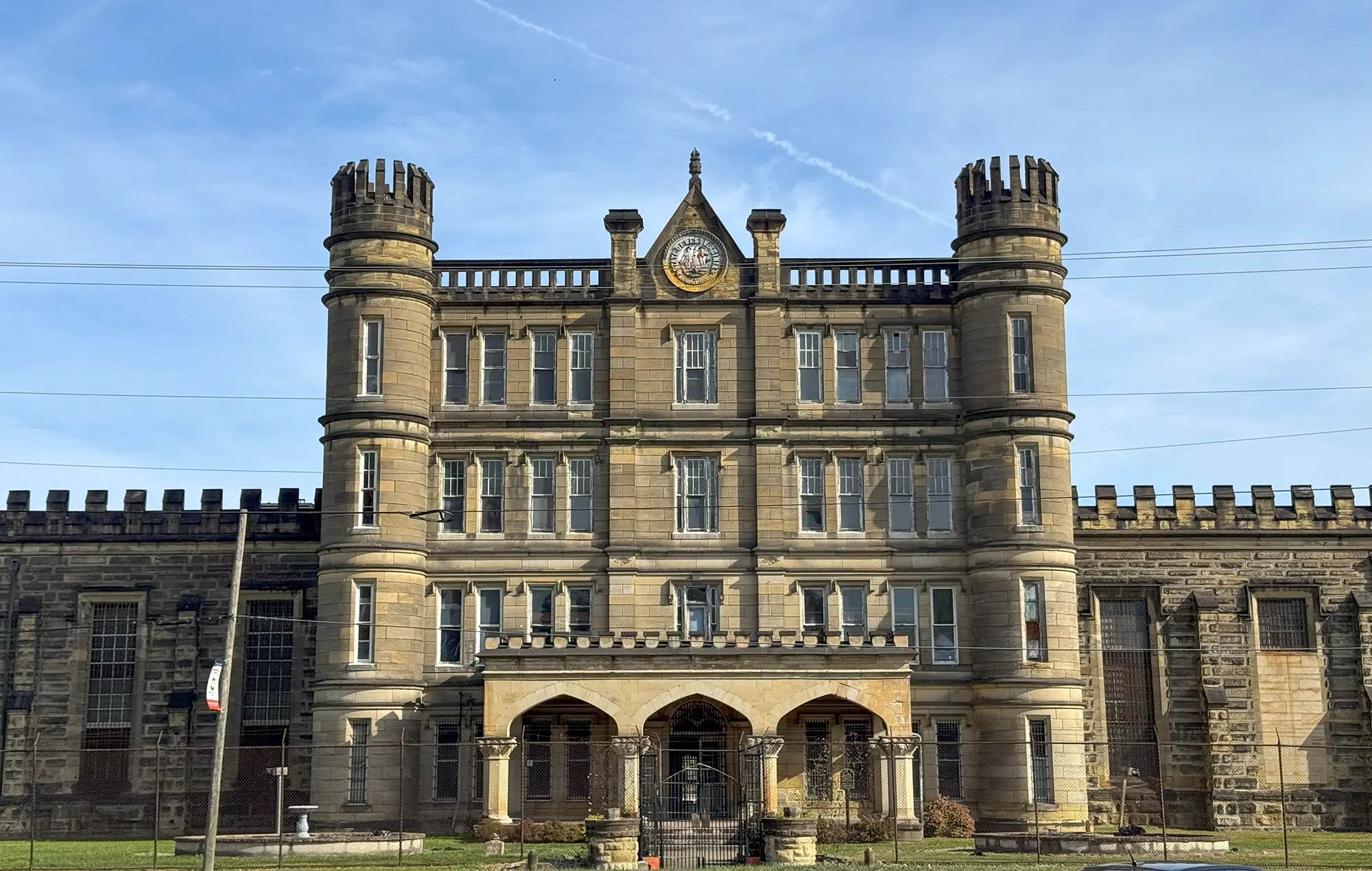
Moundsville, West Virginia is a worthwhile destination for day trippers who live close by, or those passing through this area of Appalachia while on their way to a primary destination.
Situated along the Ohio River, Moundsville is tucked between the rolling hills of West Virginia on one side and Ohio on the other. A decidedly unassuming town with an interesting history and off-beat things to do.
I've been to this area three times. First was to visit the Palace of Gold, and again a few years later to tour the West Virginia Penitentiary and summit the Grave Creek Mound. Then, while back in the area, I visited the Whitegate Cemetery, where many of those once incarcerated at WV Penitentiary are buried.
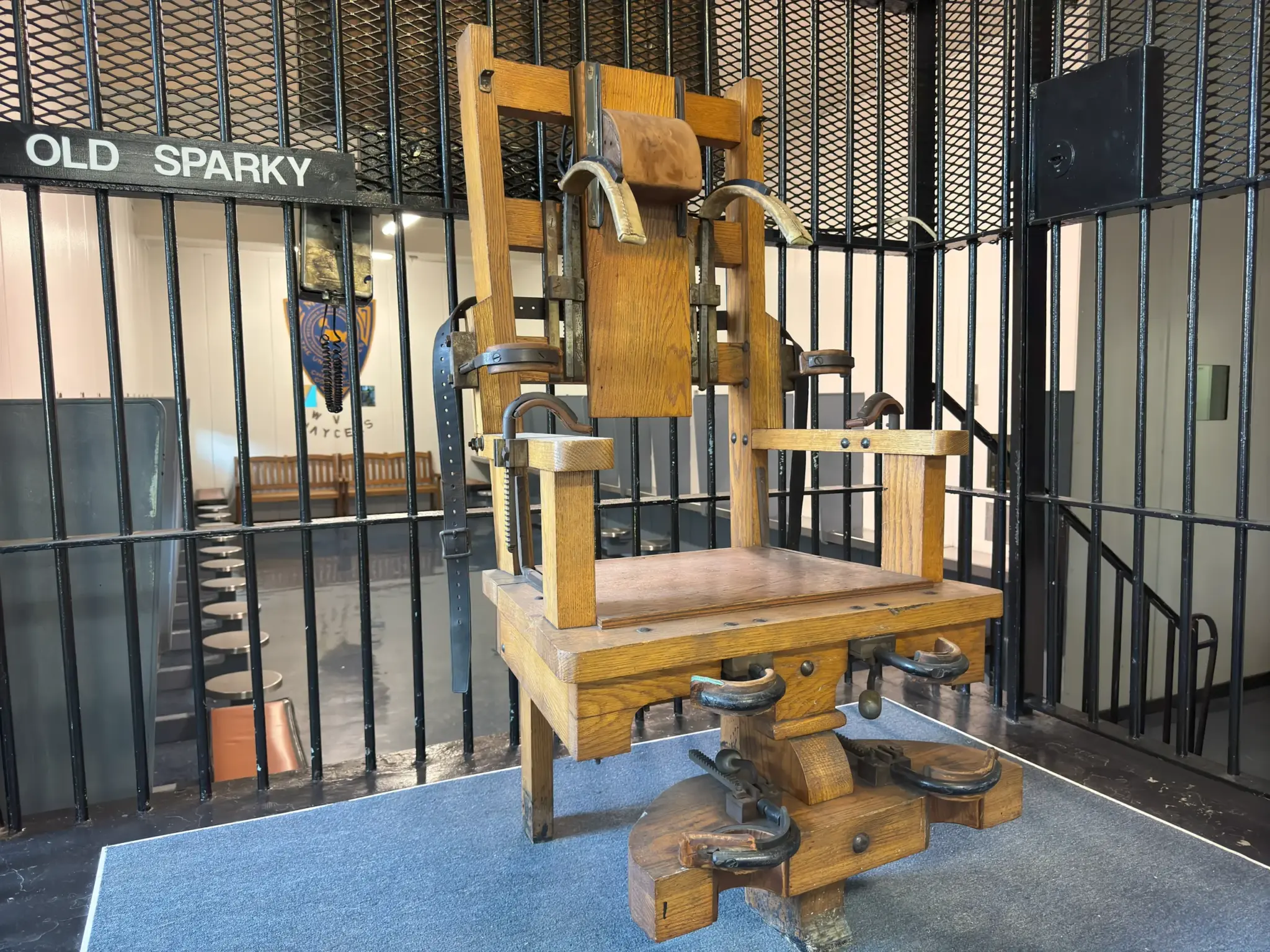
Touring the Penitentiary
Unlike Alcatraz or Eastern State Penitentiary, there's no signage or audio tour device at WV Penitentiary, so I had to get a guided tour for $15. I usually prefer self-guided tours, but having a guide at this place was probably for the best. I say that because a walk around the WV Pen is a lot more meaningful when you know the stories behind the place.
The prison's construction started in 1866, and it operated until 1995 when it was completely shut down. These days, it remains as a tourist attraction, training area for law enforcement, and is occasionally featured in movies or TV shows.
The conditions at WV Penitentiary were so horrible that in 1986, the West Virginia Supreme Court ruled that being imprisoned there violated human rights and was considered cruel and unusual punishment.
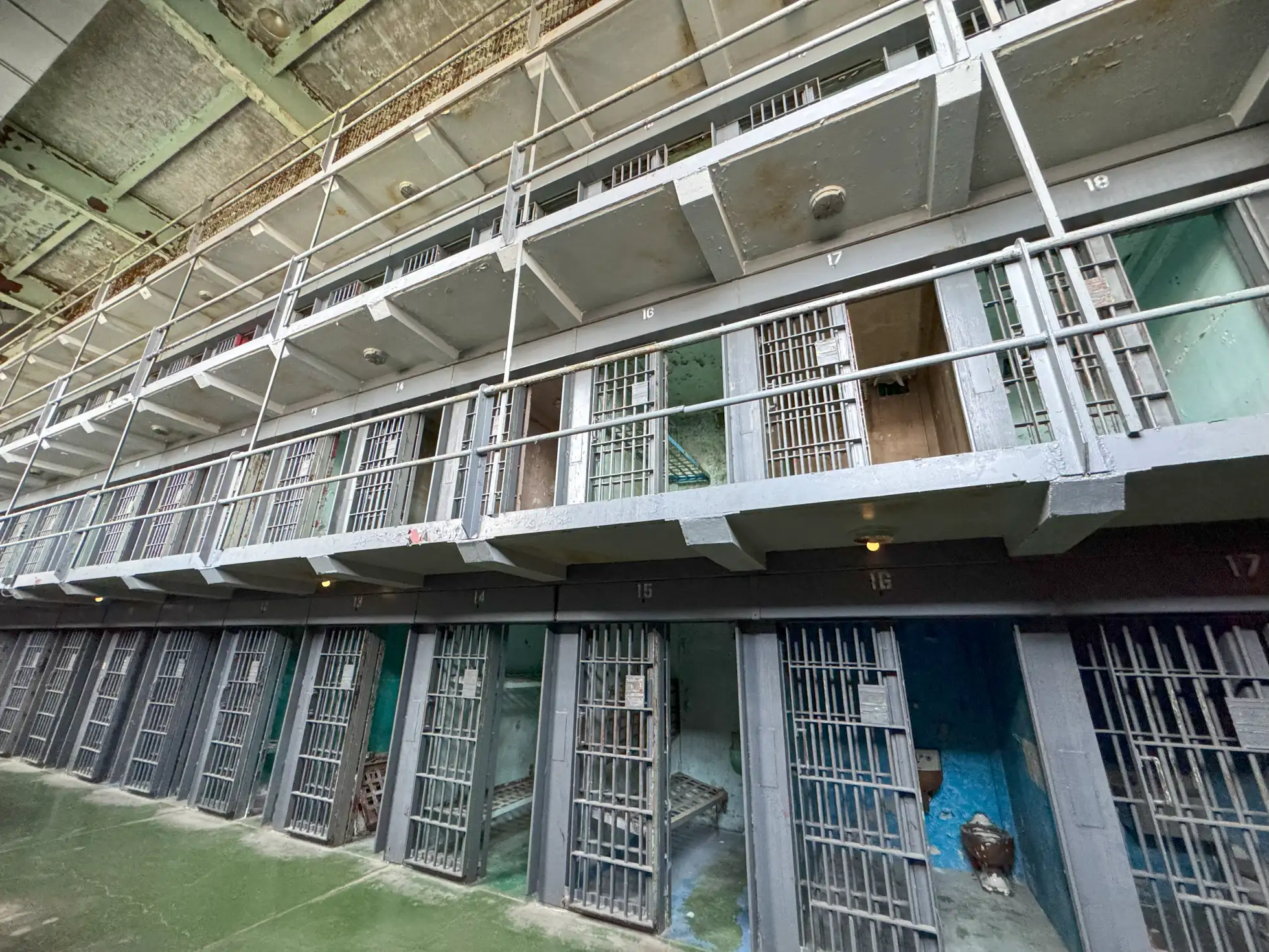
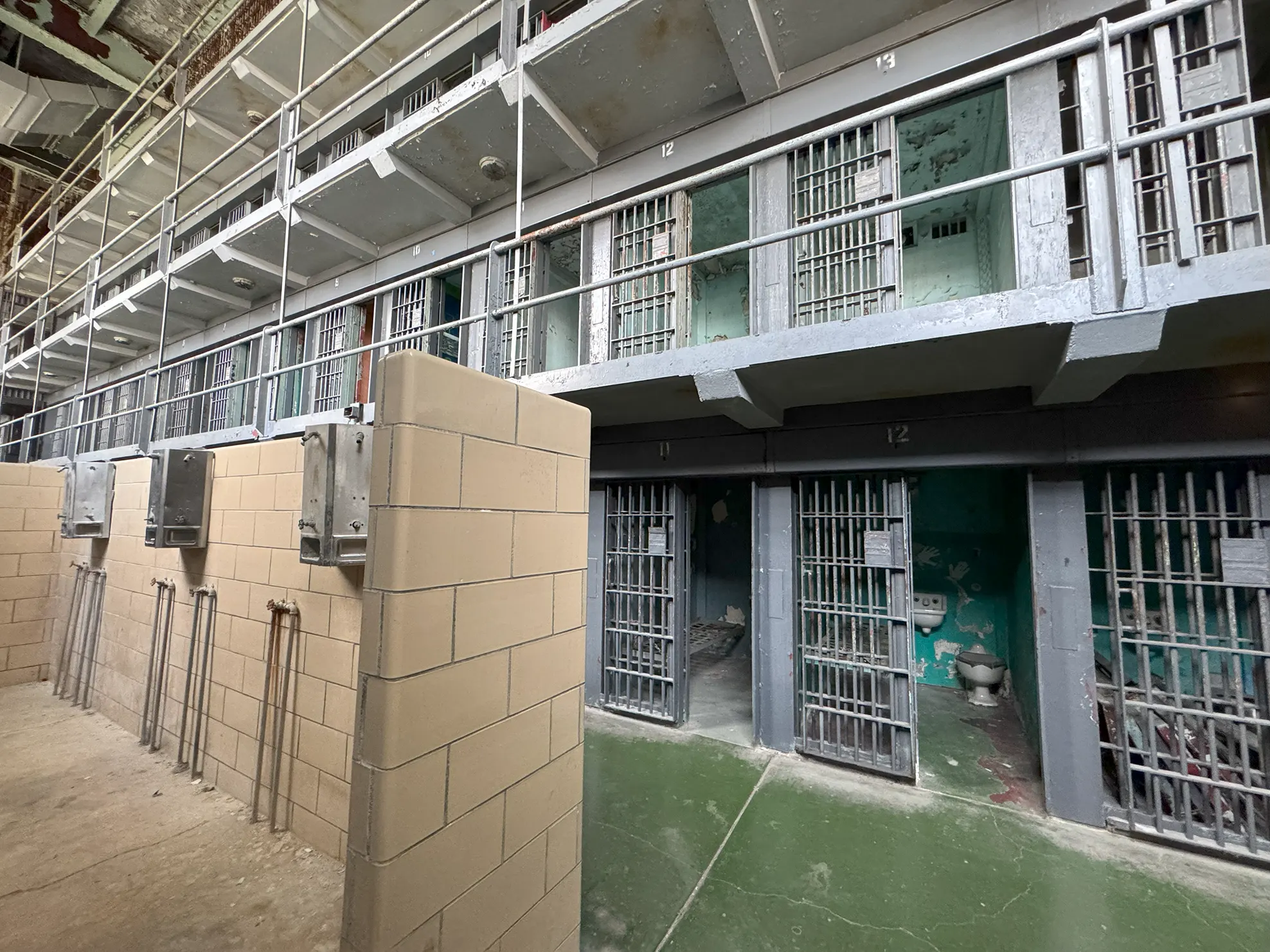
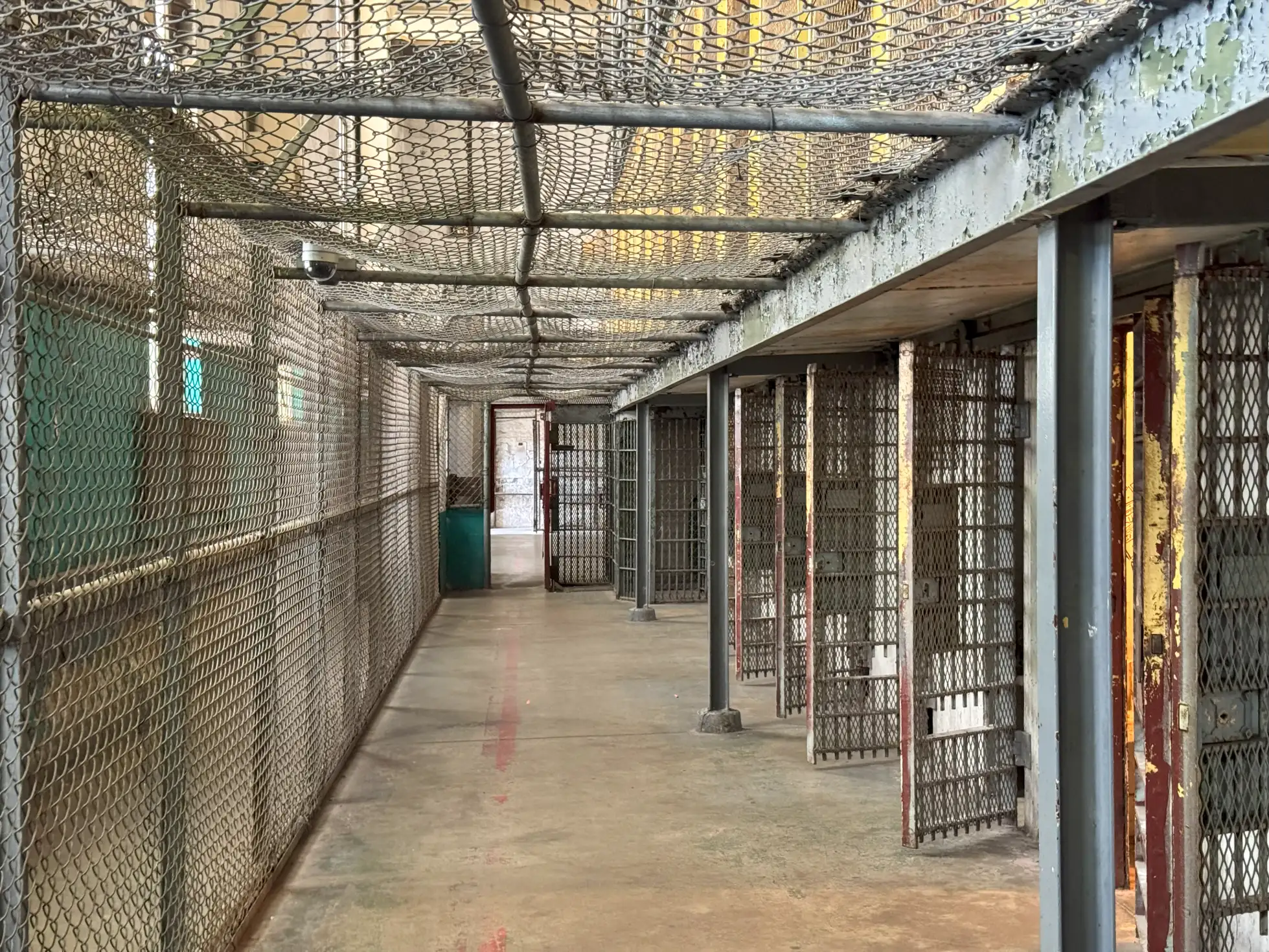
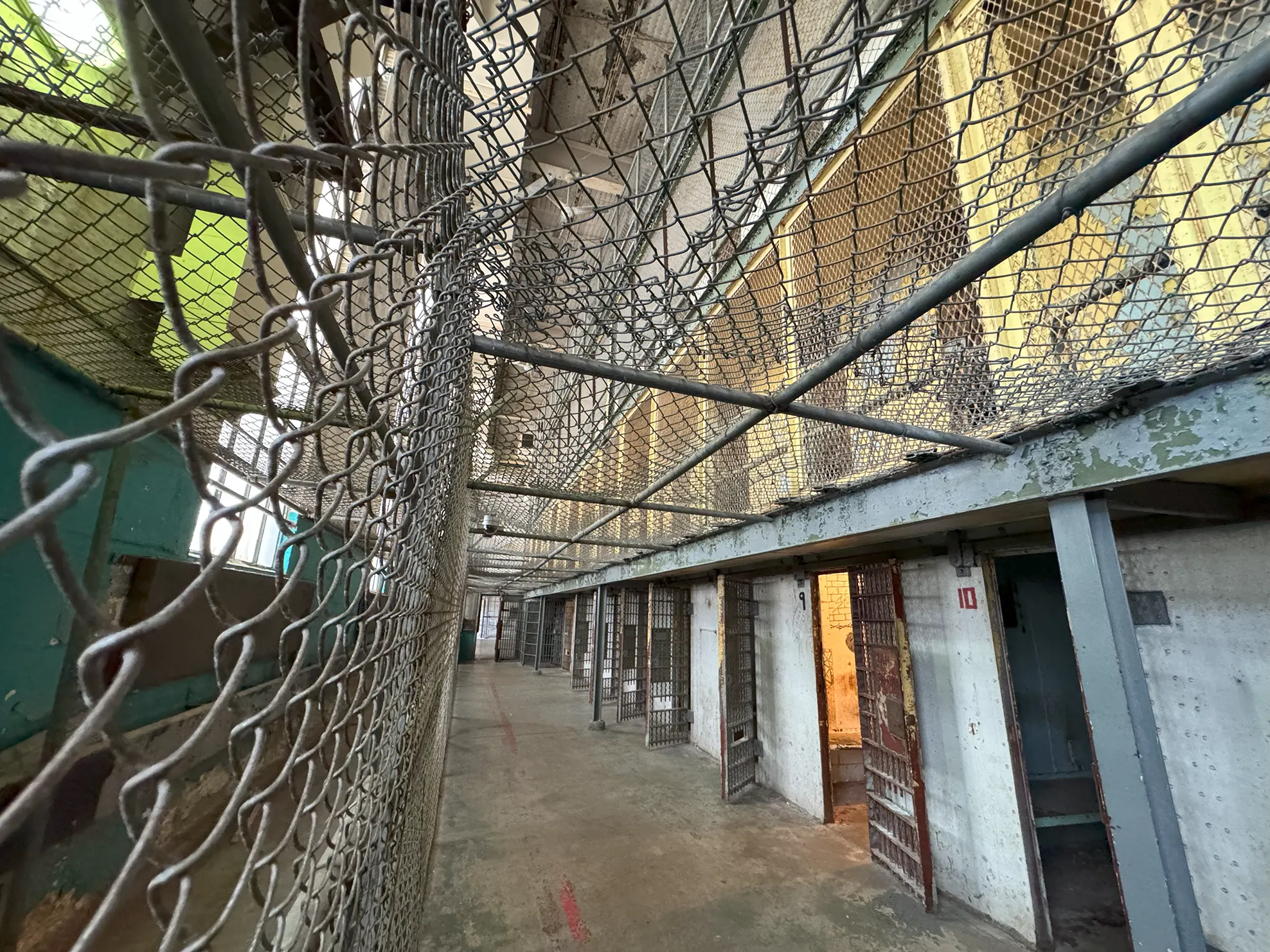
The cells were only 5′ x 7′ with two people living in each one–For reference, Alcatraz had cells 9′ x 7′, and the standard for American prison systems today is around 6′ x 8′. For a period of time, three people were crammed into each cell while construction commenced in other areas of the prison. The third prisoner used a mattress placed on the floor.
Even the doors had extra metal mesh on them, to prevent bodily fluids from being thrown onto the guards. Inmates were kept in these spaces for 23 hours per day.
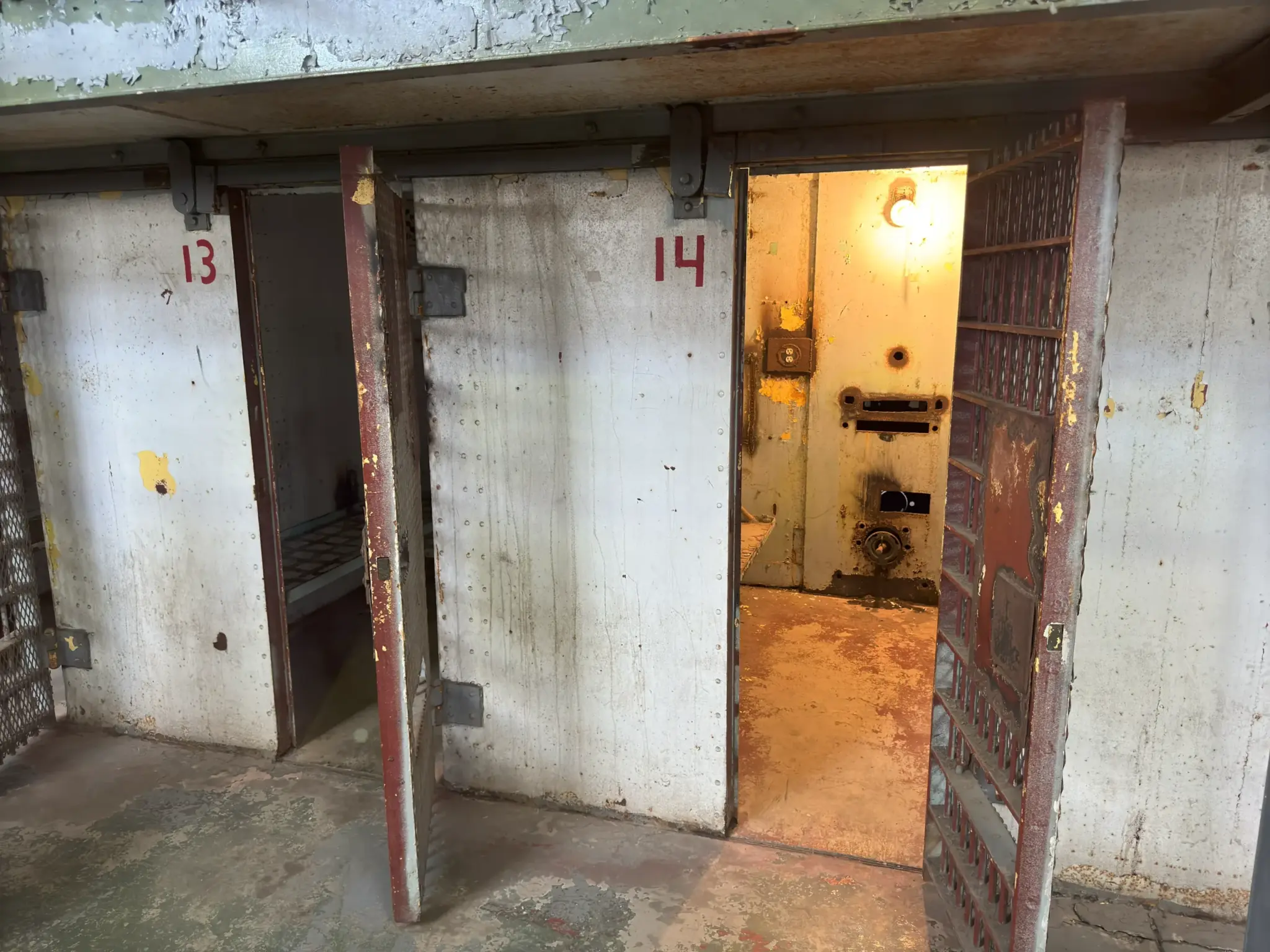
The prison also suffered from an extreme lack of airflow (freezing winters and unbearable summers), unsanitary conditions (raw sewage backing up into the cells; maggots in the food; rats throughout the prison), and other unregulated problems that led to prison riots and the penitentiary's eventual shutdown.
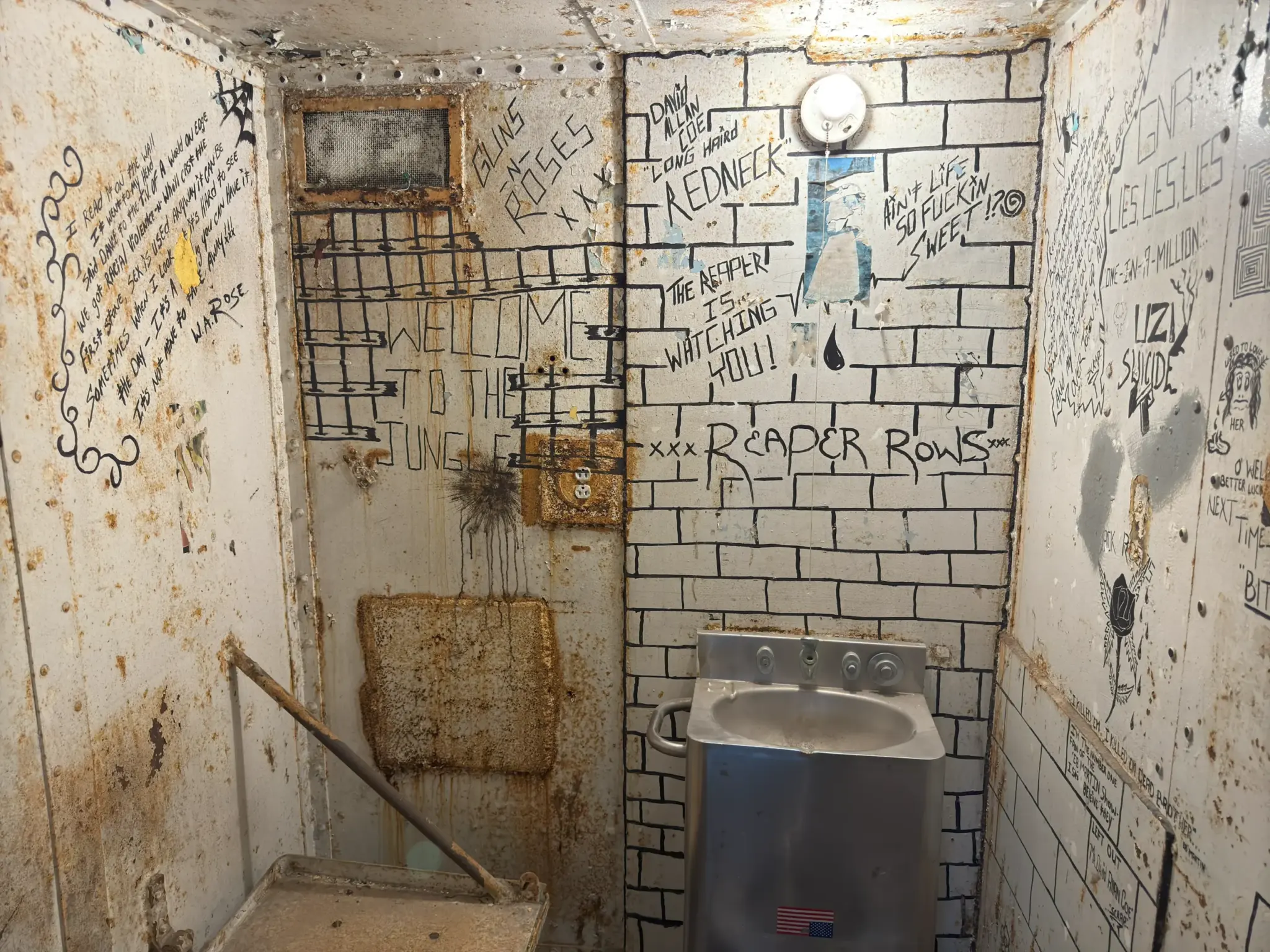
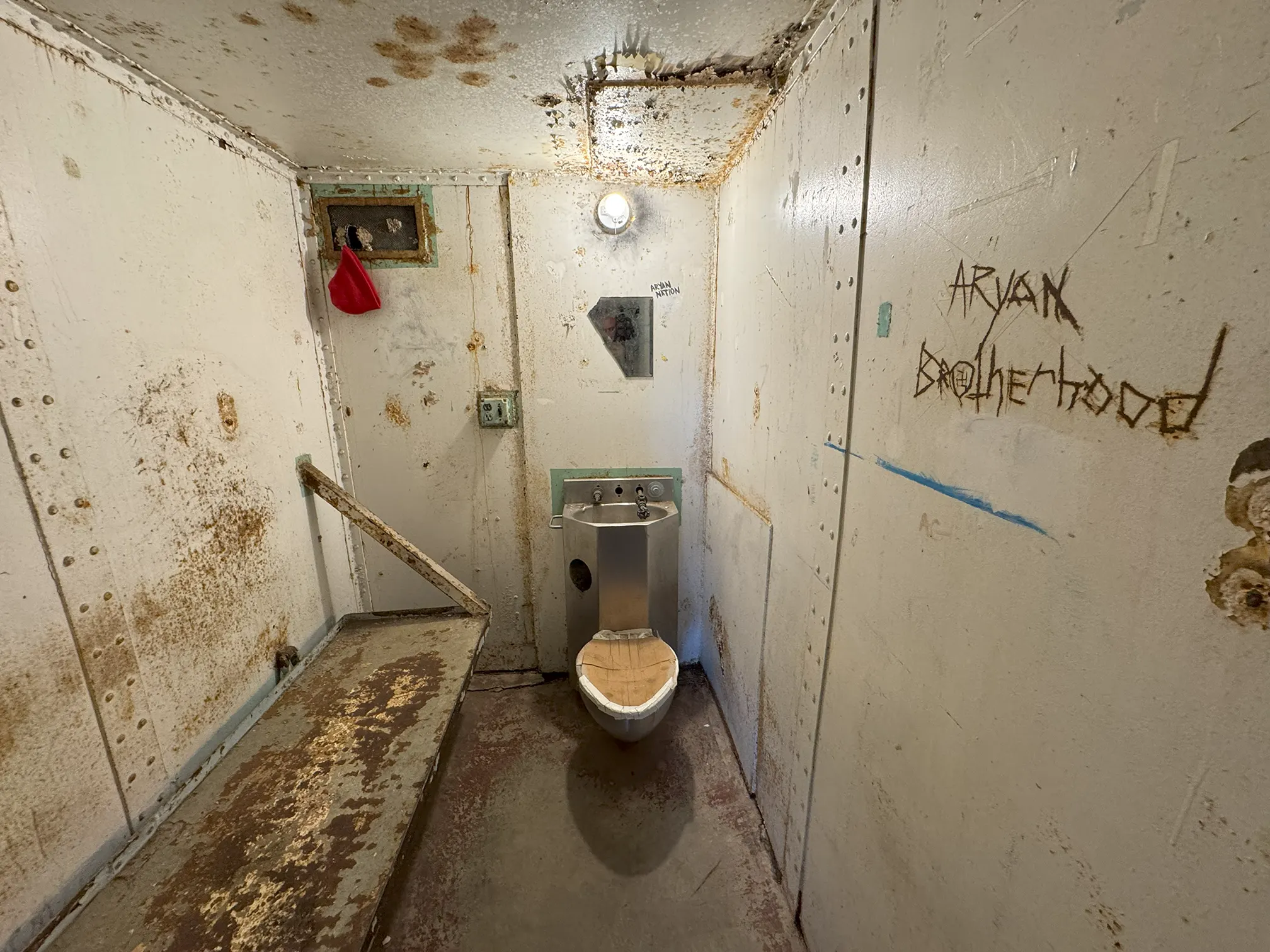
Red Snyder was the leader of the Aryan Brotherhood, a gang of neo-nazis that still operates today. He died in his cell, pictured above, when fellow gang member Rusty Lassiter came in and stabbed him 37 times with a shank.
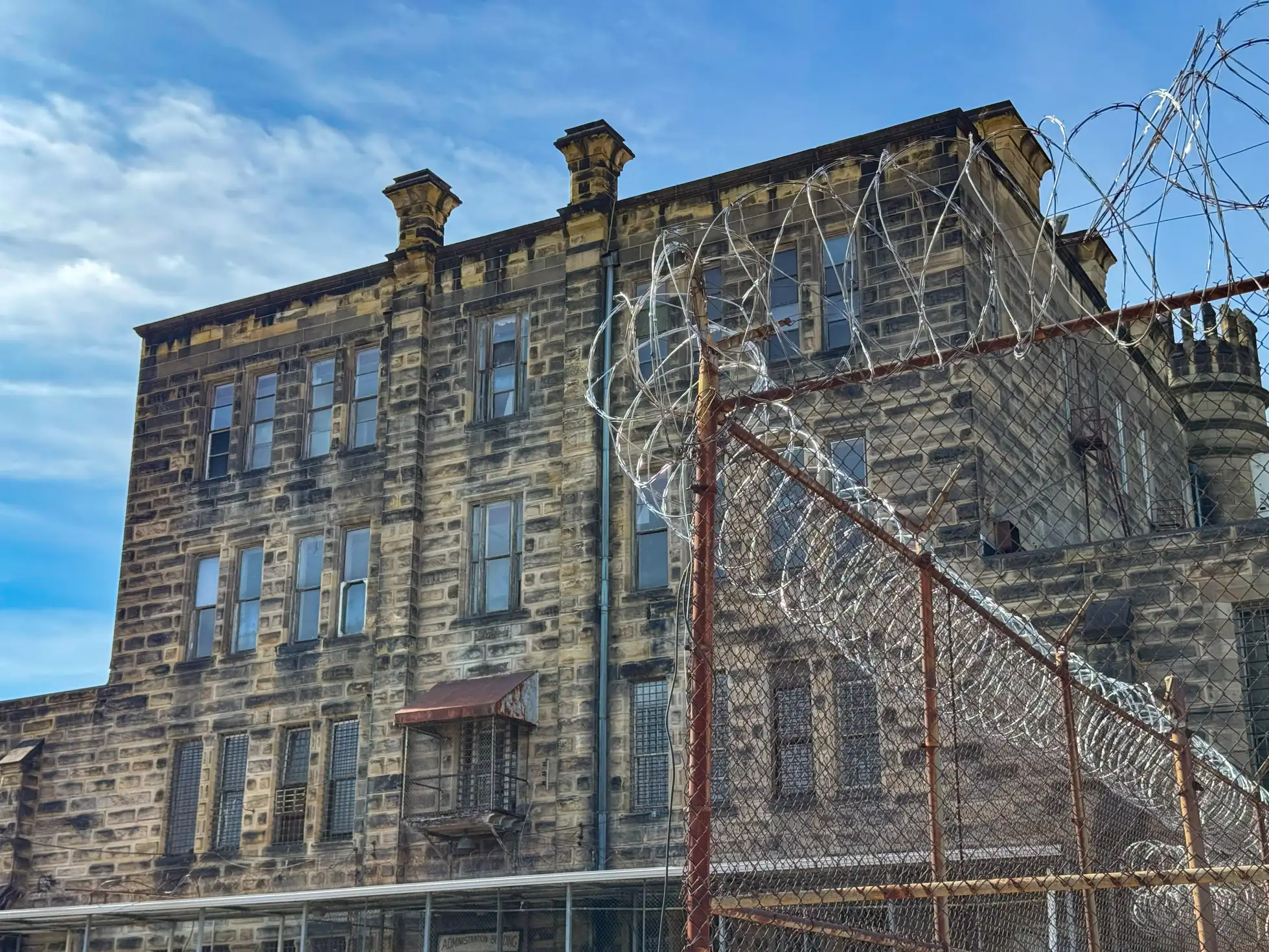
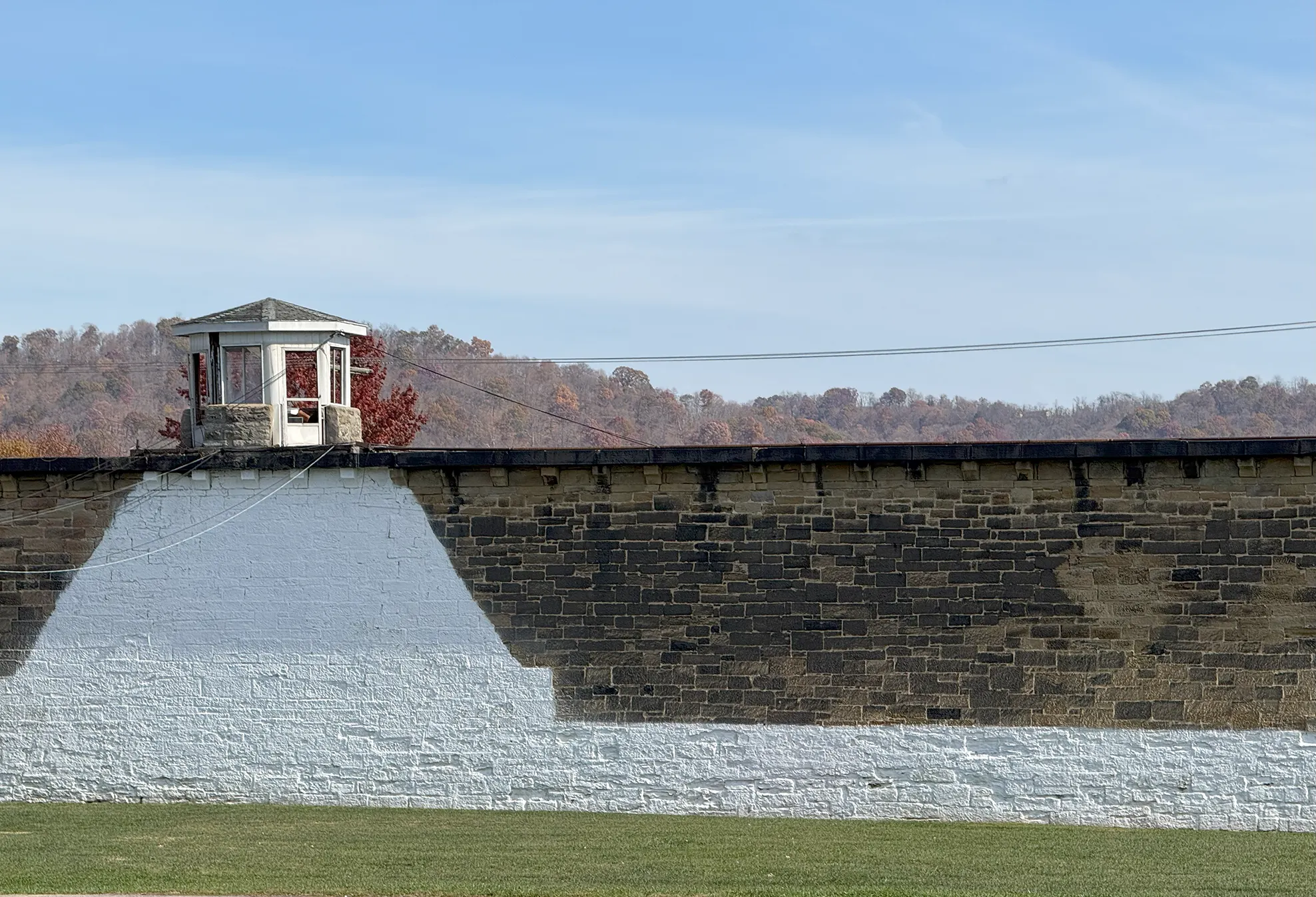
Penitentary Facts and Events
Here's a list of interesting facts of West Virginia Penitentary and some of the most significant events that unfolded at the prison. Its poor conditions and controversial history is what led to the prison's eventual demise.
- The penitentiary operated from 1866 to 1995.
- Its inception was spurred by WV's secession from Virginia during the civil war, when the state realized they lack the infrastructure for housing criminals, having previously relied on other areas of Virginia for such.
- In March 1973, a riot erupted over the poor conditions of the prison, with guards being taken hostage, one inmate being killed, and another two inmates being stabbed.
- On November 7, 1979, fifteen inmates managed to wrest a service gun from one of the guards and proceeded to escape by walking out the front door. Upon exiting, they encountered an off-duty State Trooper and killed him in front of the prison. The shooter, Ronald Turney Williams, evaded recapture for 18 months.
- On New Years Day 1986, a prison riot saw inmates taking control over the prison for two days. They demanded to talk to the governor, to whom they sent a list of demands. The main cause of the riot was the prison's extremely poor conditions. Three prisoners were killed by fellow inmates throughout the ordeal.
- 94 men were executed at the prison. 85 hangings and 9 by the electric chair.
- Hanging executions were open to the public until the aftermath of June 19, 1931. On this day, Frank Hyer was decapitated by the noose around his neck when the trap door opened, in front of a public crowd that had gathered to witness the event. This unexpected spectacle outraged the public and executions became invitation only.
- There were over 500 escapes from the penitentiary – I don't remember the number the guide gave, and it's hard to pin down the exact number online. But it was over 500, with the vast majority resulting in recapture shortly after.
With the amount of riots and escapes occurring over the 129 years of the prison's operation, along with the atrocious conditions in which the prison operated and rarely addressed, it's no wonder that it was eventually shut down for good.
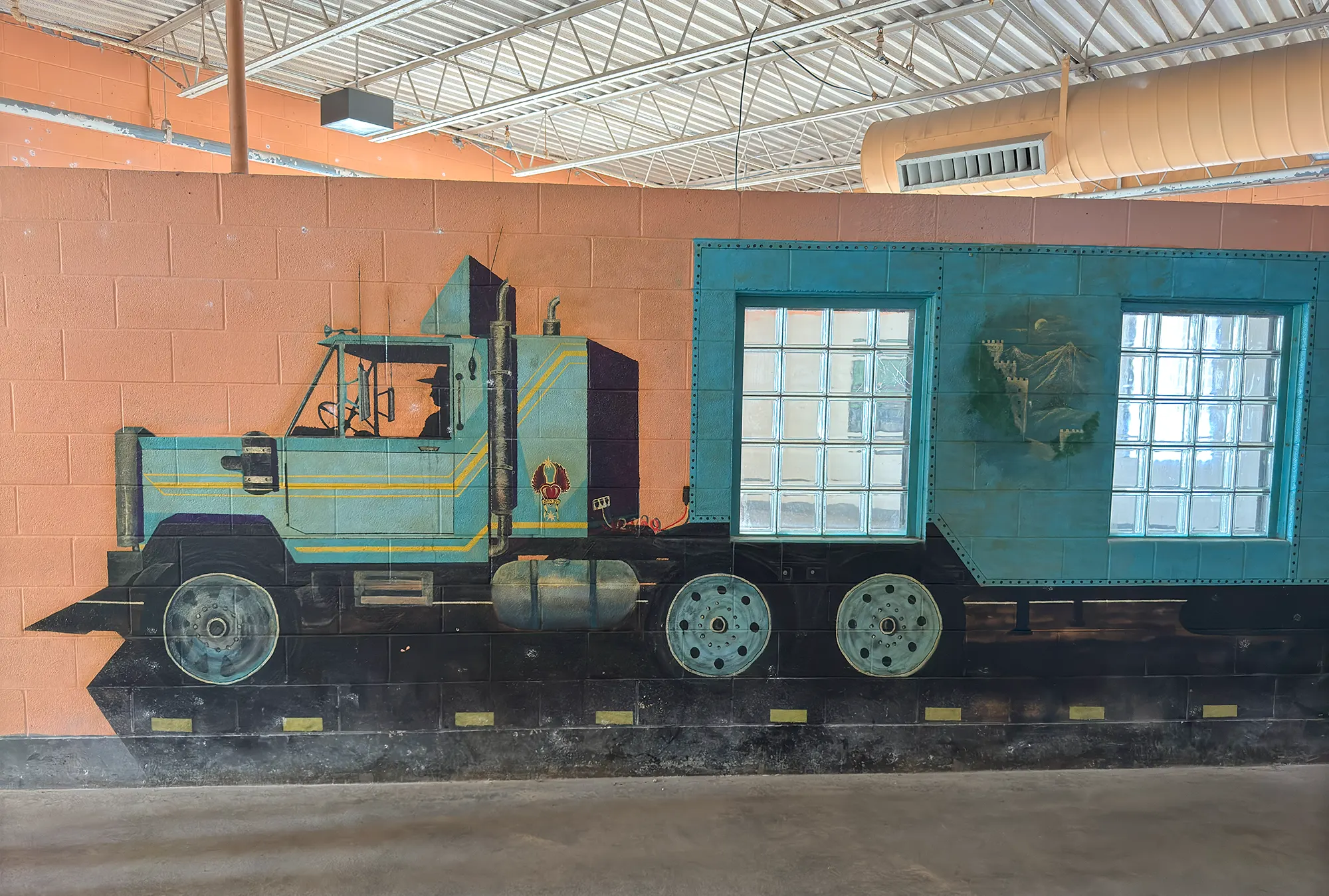
The inmate that painted the mural above was serving a sentence for murdering and dismembering his wife, Sandy. He left a tribute to her on the cab of the truck:
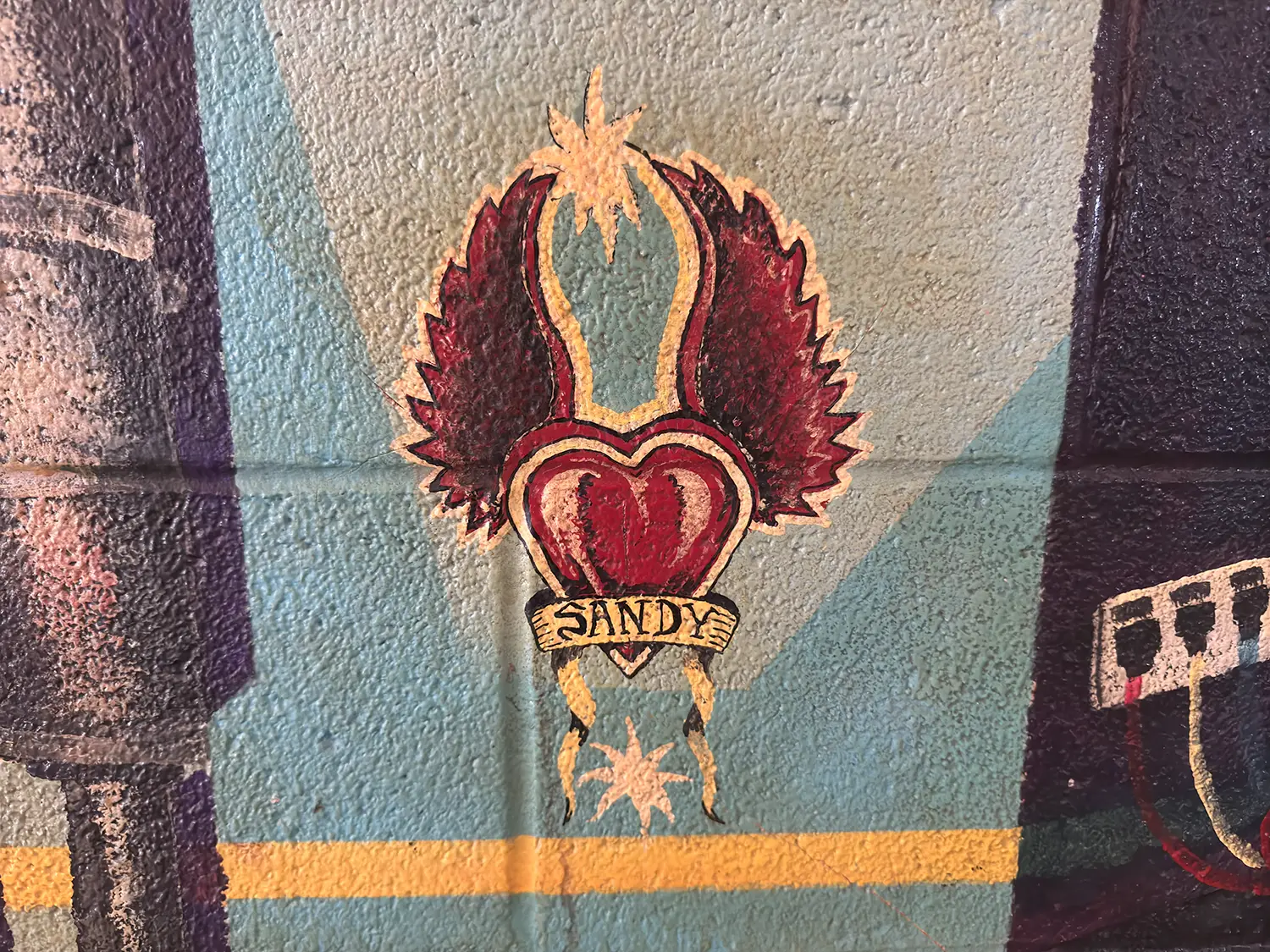
It's hard to substantiate the above claim about the truck mural online, but it's the story my guide told me. I've found past tour members online that have said they were told the same story. I believe it, but some stories seem anecdotal and I can't find evidence of them online.
Whitegate Cemetery
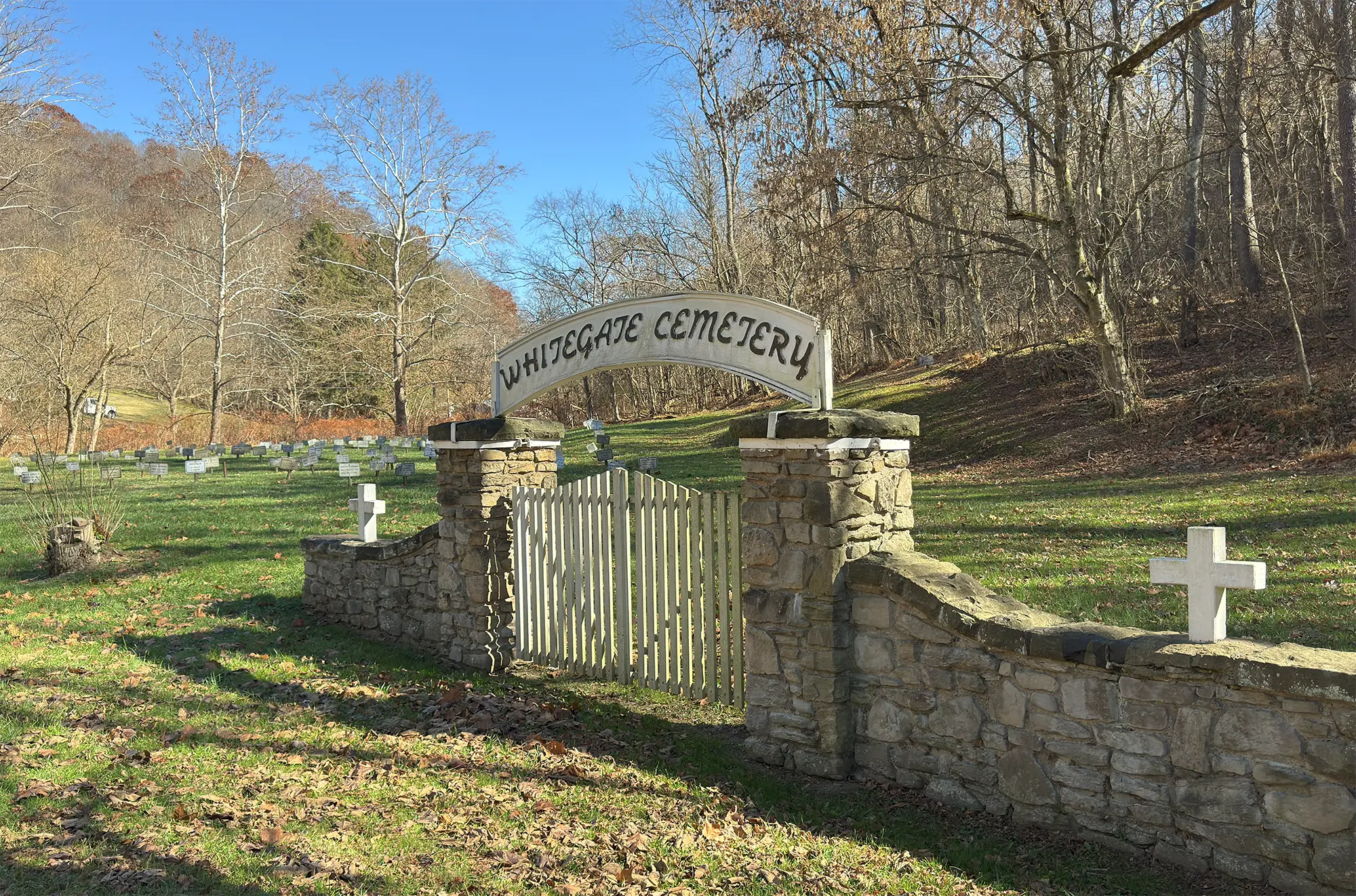
Whenever an inmate died in West Virginia Penitentiary, whether it be from state execution, natural causes, or another way, their remains were interred at Whitegate Cemetery if no family wanted to claim them or have them buried elsewhere.
The cemetery is not far from downtown Moundsville, but still feels like it's in the middle of nowhere on Toms Run Lane. The road is not available on Google Maps Street View, and there's no cell service in the area.
It seemed to me like the state wanted to pick a place near the prison to bury dead, unclaimed inmates, but wanted it away from the public eye. They stuck the cemetery in the middle of what was probably an empty road at the time, but since then, small homes have sprung up across the street.
Convicts get a proper burial but only a simple license-plate-sized plaque marks their grave.
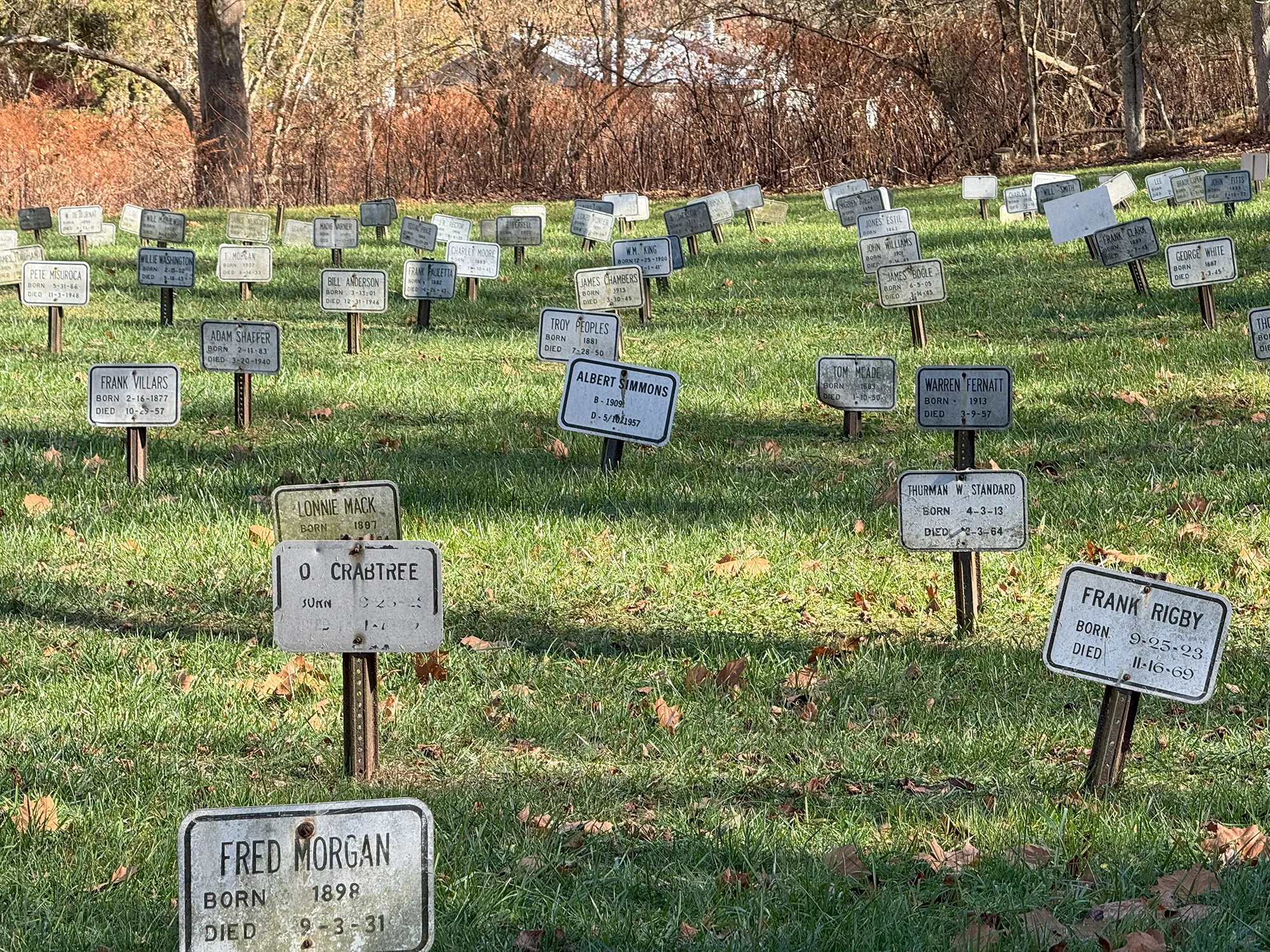
You have to park in a grassy area along the side of the road, and then cross a creek to access the cemetery. Fortunately, the creekbed was relatively dry when I visited. It seems that there was once a bridge to facilitate easy access, but it has since fallen apart.
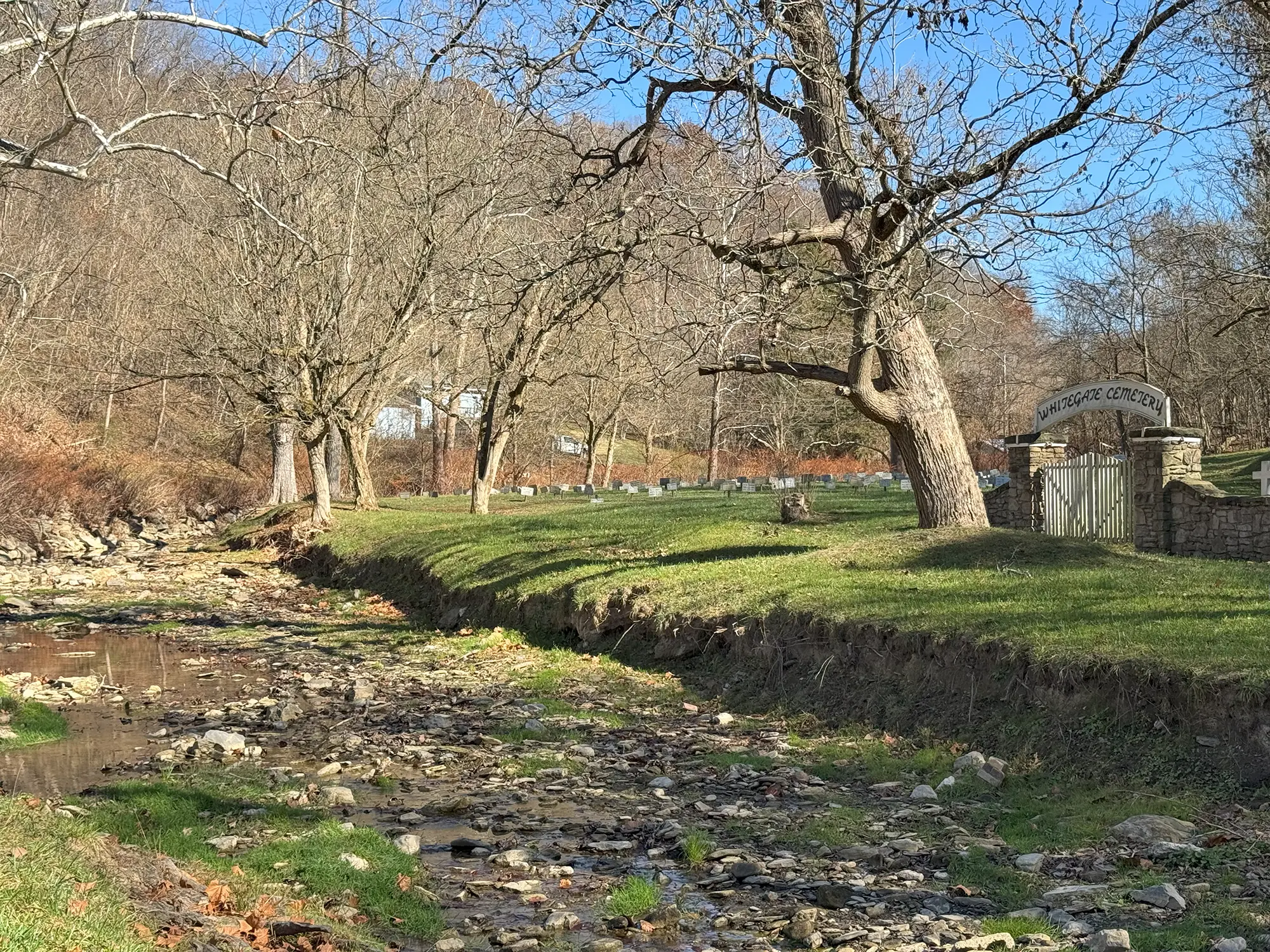

Some notable convicts are buried here, such as Harry Powers, a serial killer with seven total victims. He was imprisoned at West Virginia Penitentiary and subsequently hanged there in 1932, after receiving the death penalty for his crimes.
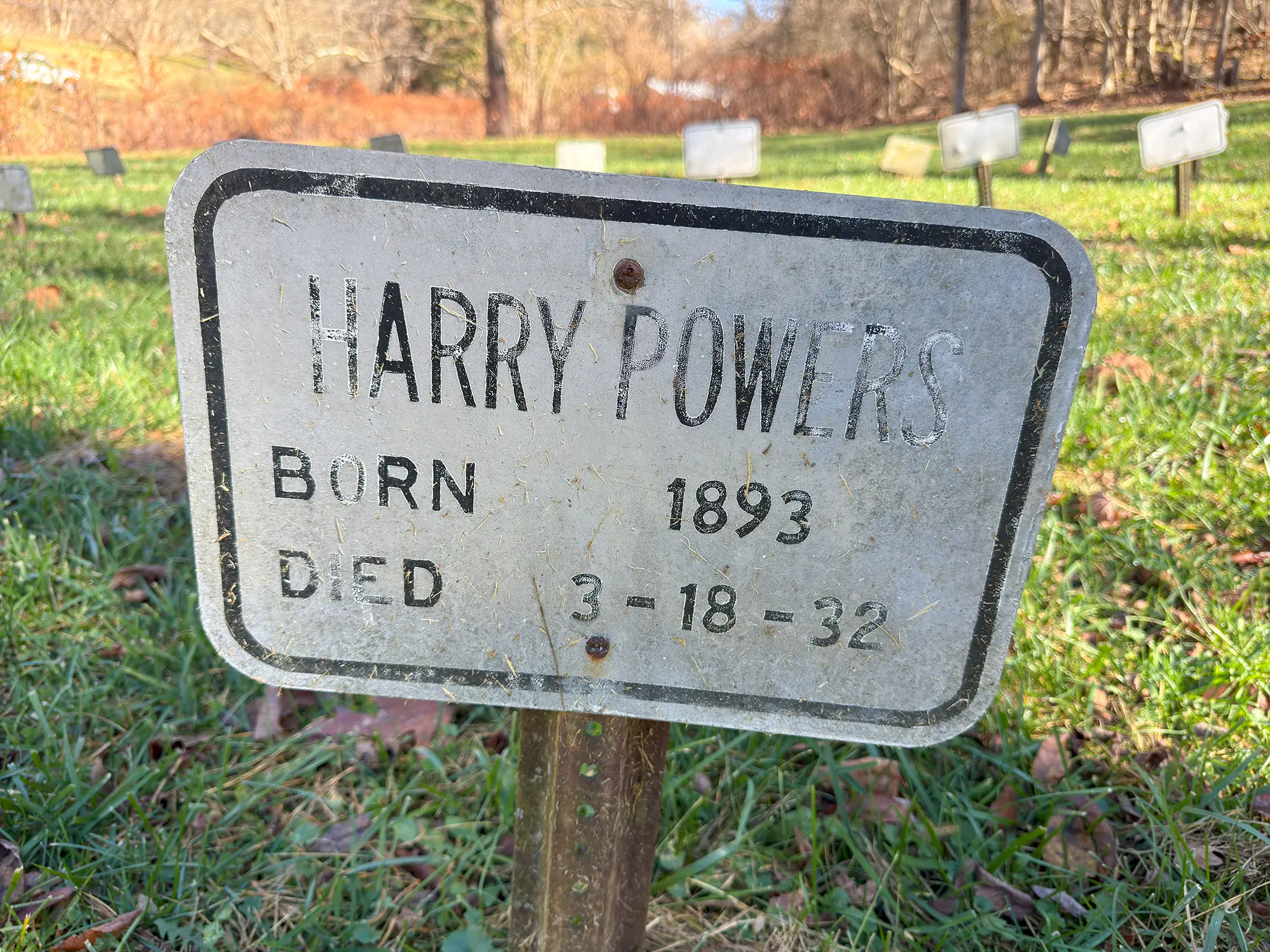
Seeing as these bodies went unclaimed, and no one else cared about the remains of these wretched people, the signs represent a cheap and simple way to do the bare minimum at marking their graves. Some of the markers are now missing or have completely faded text:
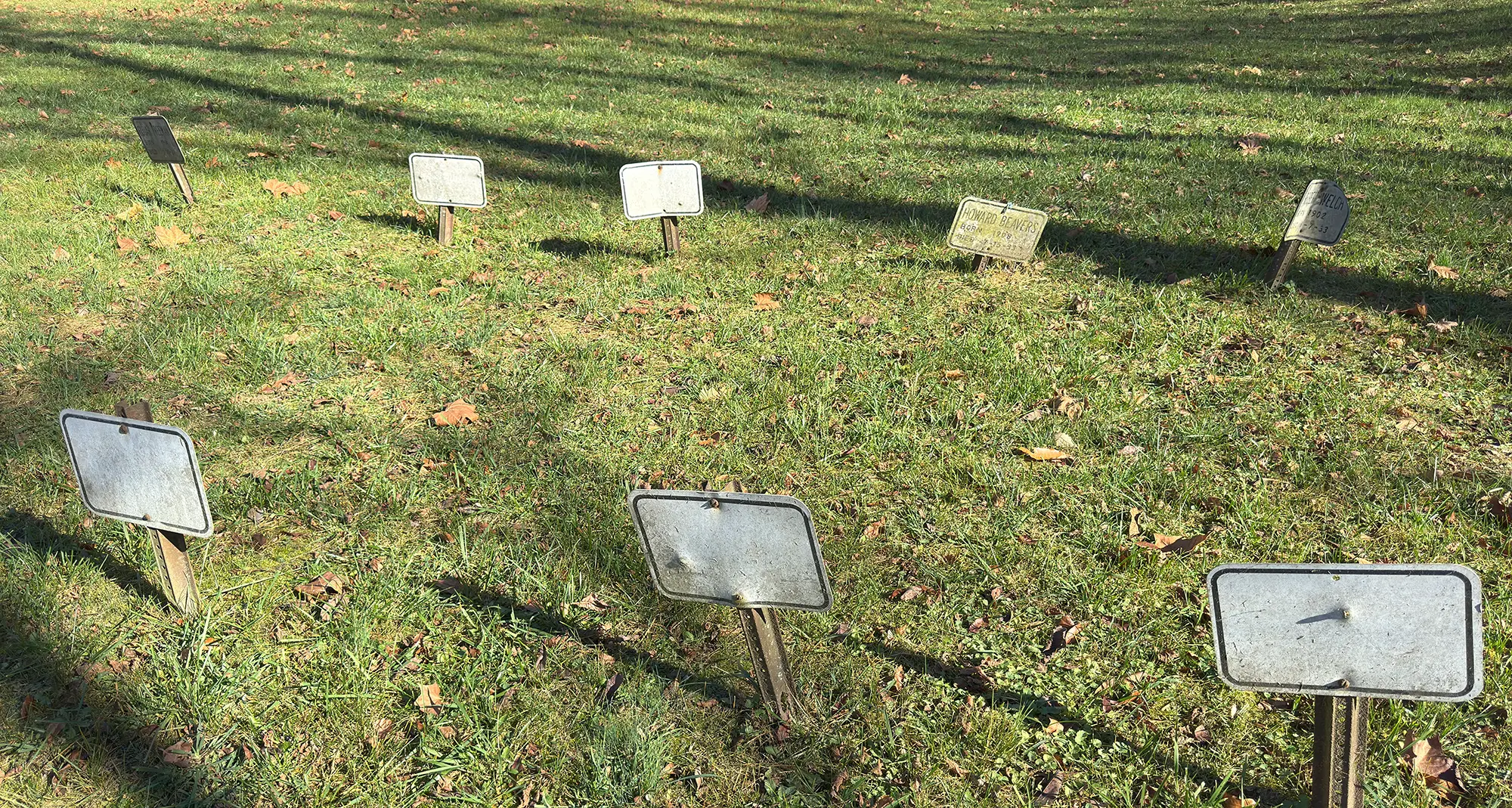
Grave Creek Mound
Grave Creek Mound is the biggest Indian burial mound in the USA, dating back to 250-150 BCE. And it's located right across the street from the penitentary. It's free to enter the research complex, after which you can walk to the top of the mound. I spent a good 20 minutes inside of the museum after summiting the mound.
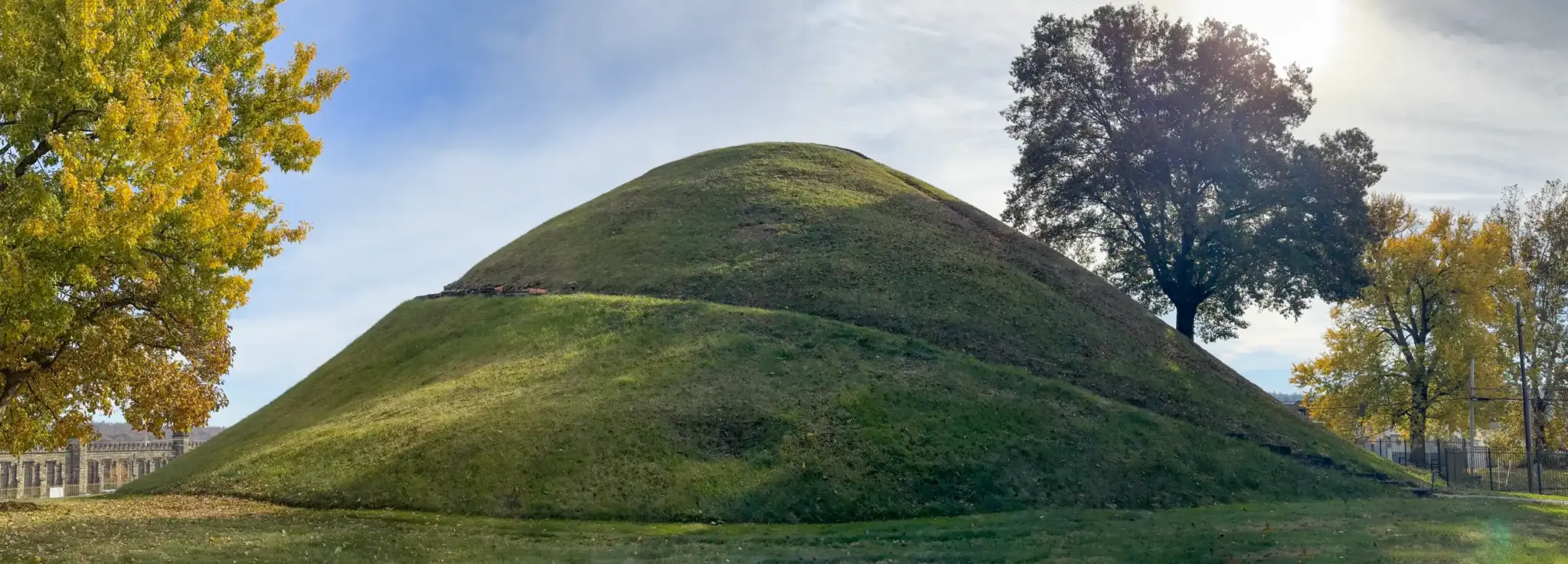
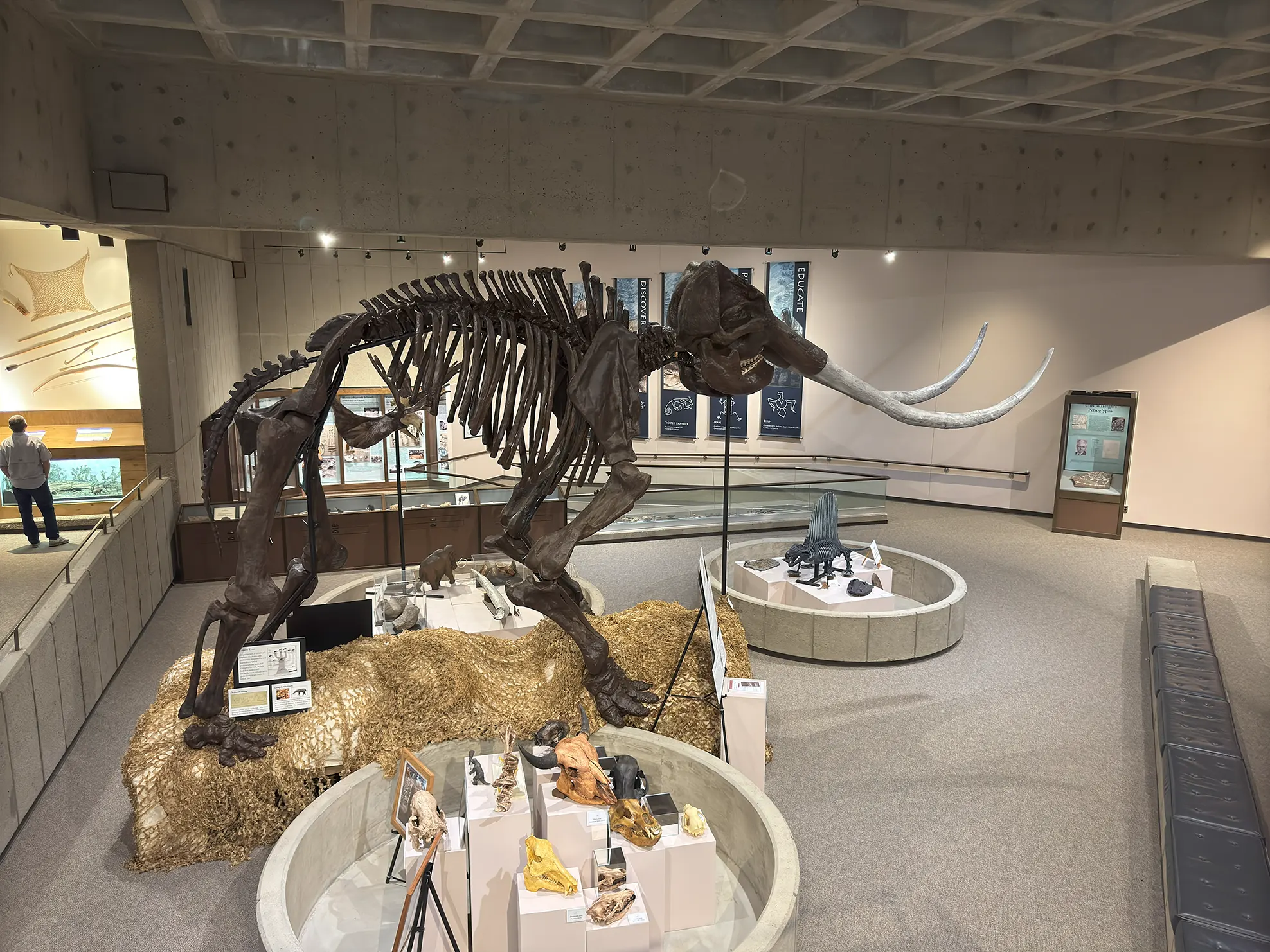
The best picture of the penitentary can be shot from the top of the mound.
